Overview
Userpilot’s translation service gives you the full ability to translate the Checklist content into different languages. You can provide on-demand help for your users in the right language for them. This can be easily done with a click of a button.If you’re on the Enterprise plan, you can add an unlimited number of languages in Localization. Growth plan users can add up to 5 languages. Starter users will need to upgrade their plan to access the localization feature.
Use Cases
- Non-English speakers can now go through their Checklist tasks more easily.
- The ability to target a global audience by delivering the same content in multiple languages.
Setup your language localization parameter
To accurately localize your Checklist, Userpilot determines which language to show to your end-users based on the language localization parameter. This parameter can be changed from the Localization tab under your account settings.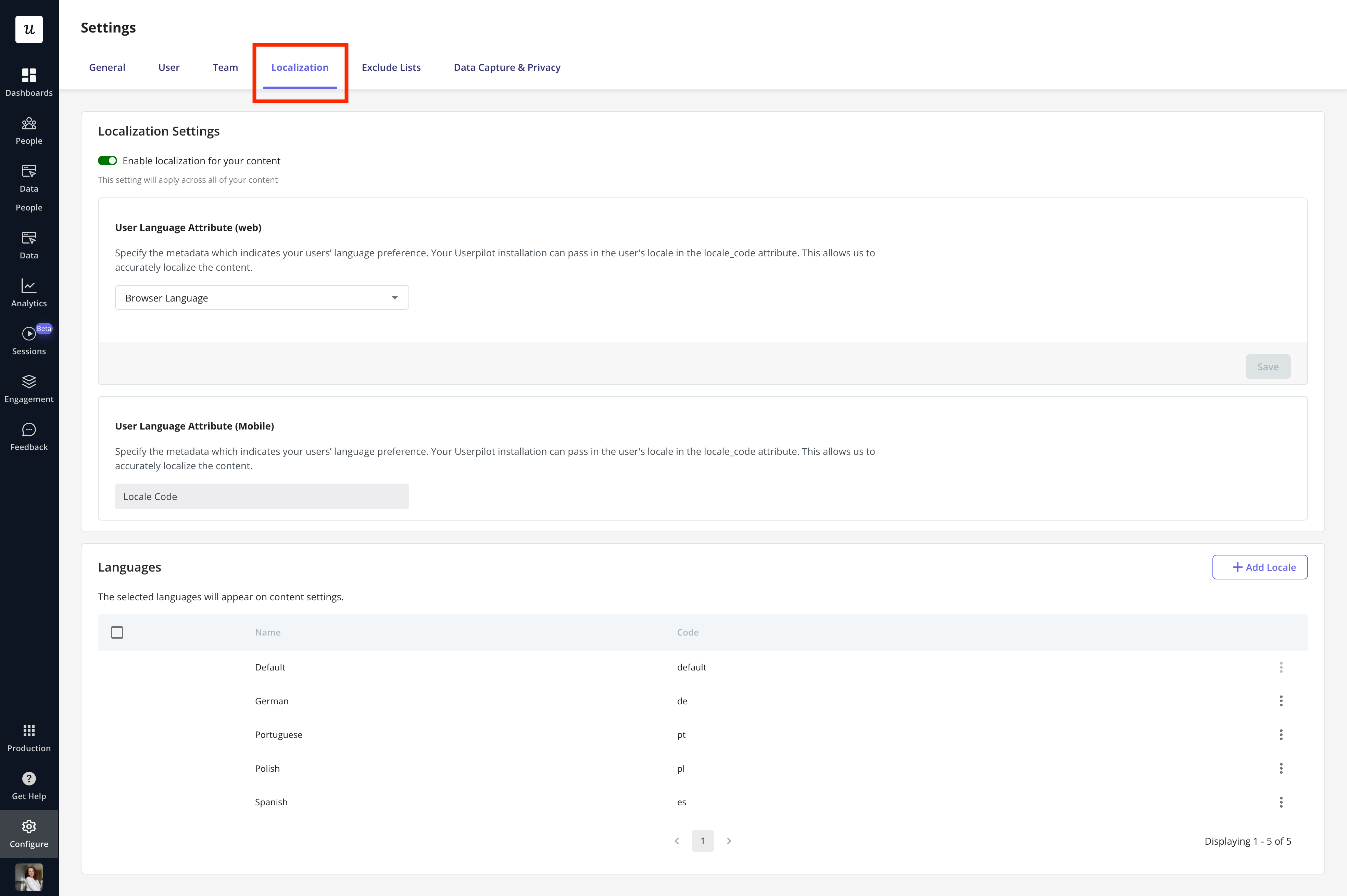
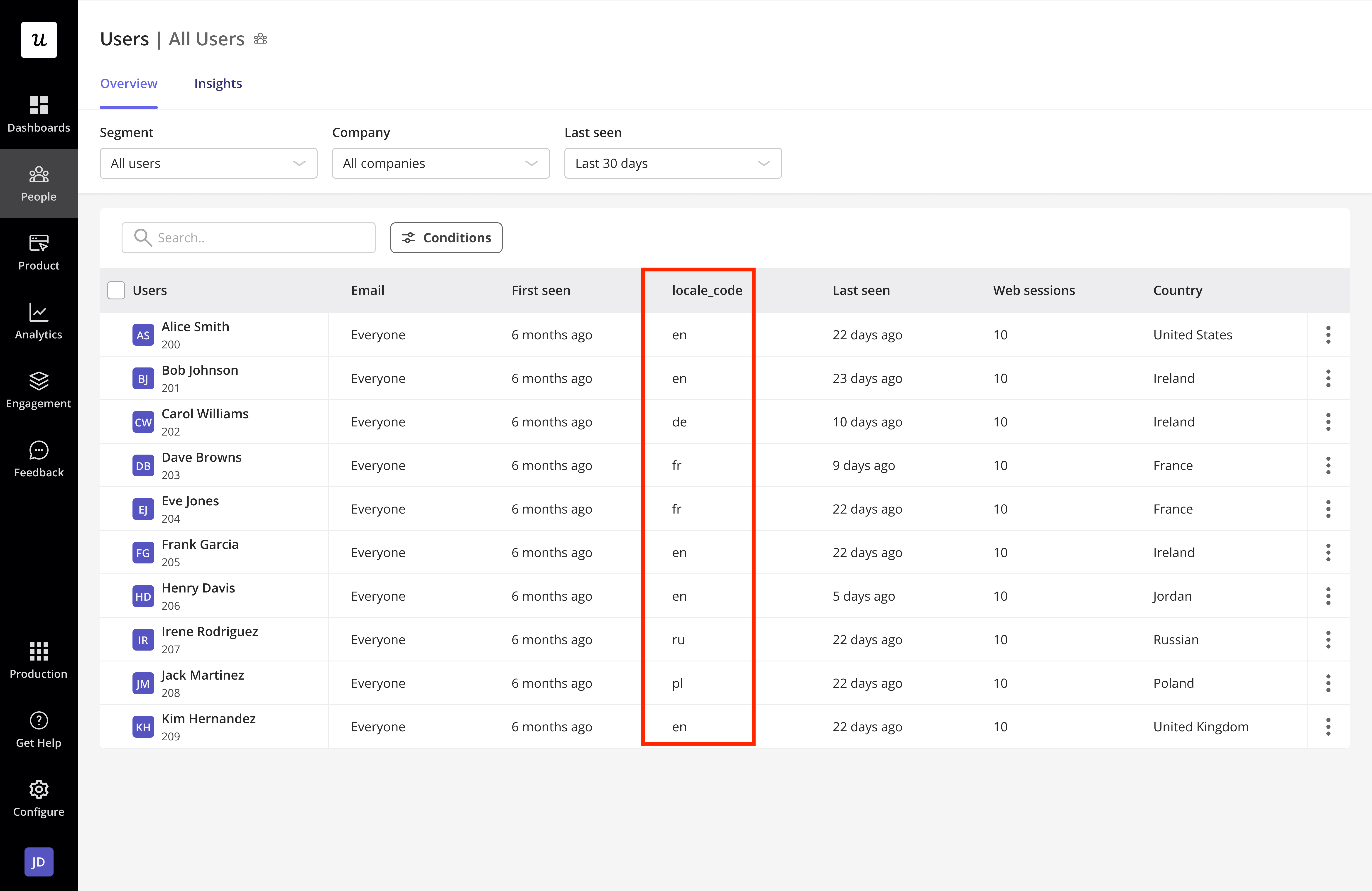
Types of localization
To start localizing your Checklist content after choosing your desired localization parameter, you can click on the localization tab in the Checklist, then click on the language that you would like to translate the content to and select the desired method of translation.- Automated: Choose the desired language(s) and we’ll automatically translate the content using our state-of-the-art AI-powered language translation service.
- Manual: Export the content as a CSV or XLIFF file, send it over to your localization team for translation, and then import it back to Userpilot.
Important note: The translated content cannot be retrieved once you change the translation method from Automated to Manual and vice versa.
Step-by-step localization guide
Automated
- Create your Checklist in your desired language since it will be considered the default for translation, then head over to the localization tab and select the language you want your content to translate to.
- You can click on the “Auto-Translate” button to auto-translate all the content in the Checklist. You can also auto-translate each field individually by clicking on the translation icon that appears in the test field.
- Switch on the Live toggle before clicking Publish to ensure your localized version is activated.
You can add as many languages as you want. They will be auto-translated by Google.
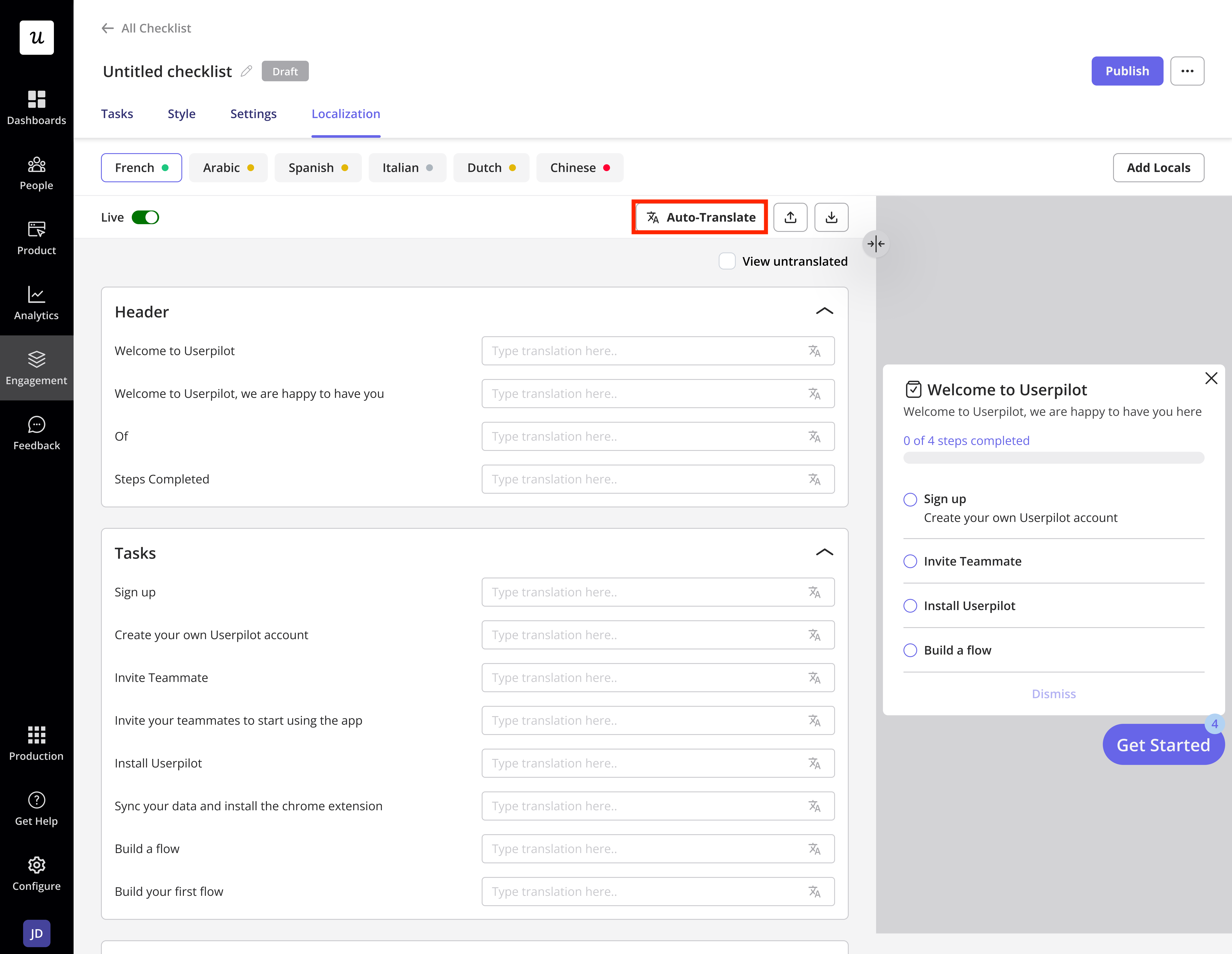
Important note: Enabling the option “Override fields already translated” will override any fields that you translated when editing individual text fields.
Manual
If you want the translations to be more accurate, you could add the translation yourself by exporting your files first, editing them, and then importing them.- Before enabling manual localization mode, make sure that you have fully created your Checklist in your desired language localization mode.
- Click on the export button to download the CSV or XLIFF file. The file for each of the languages will contain the content as strings.
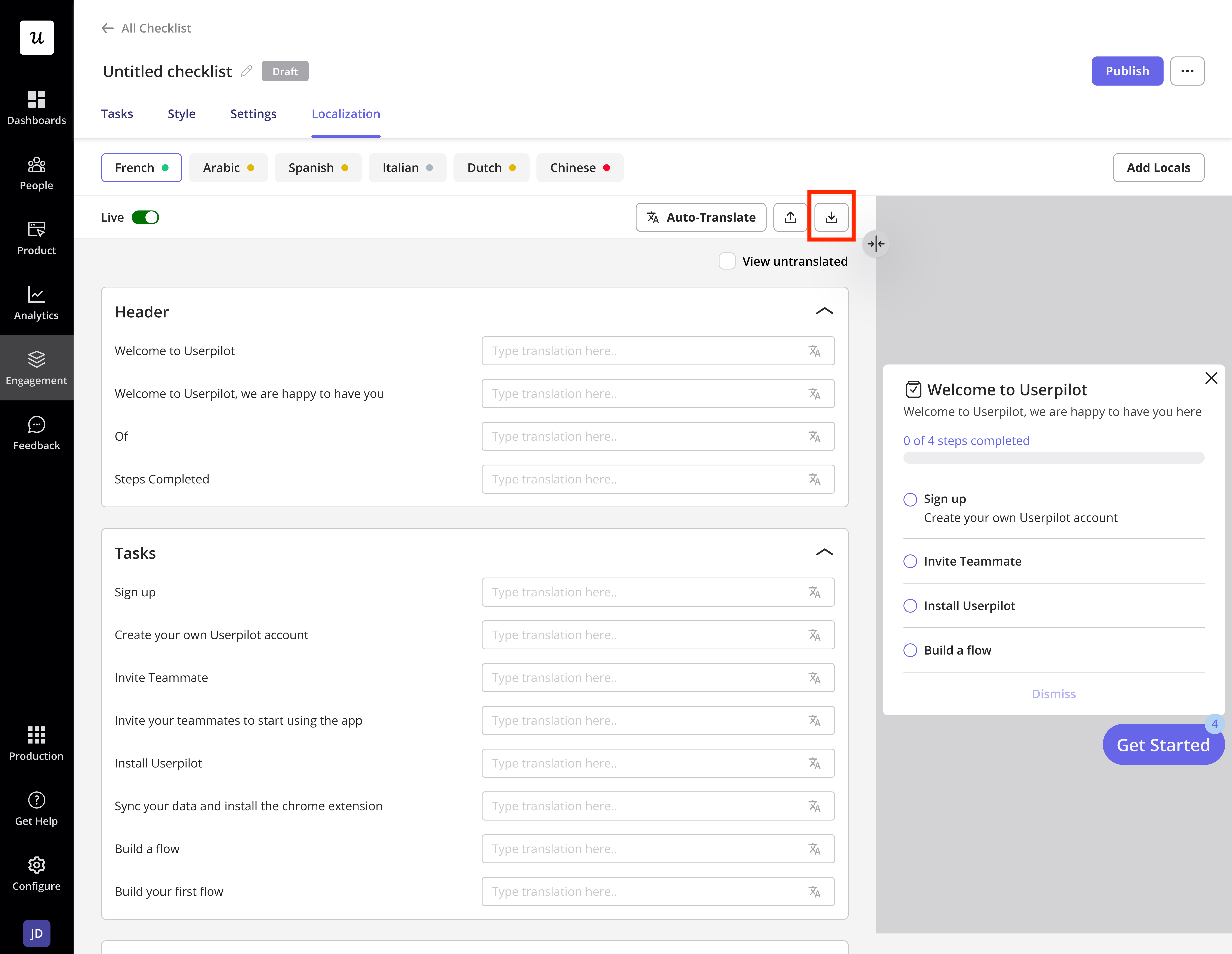
- Here is what your exported file will look like:

- Enter the translation of each row into the ‘Target’ column:

- Be sure to save your file as CSV UTF-8 (Comma delimited) when you have finished translation to your desired language.
- Once you are confident that your content looks fine, just toggle the Live option, and a green indicator should appear for that specific language.
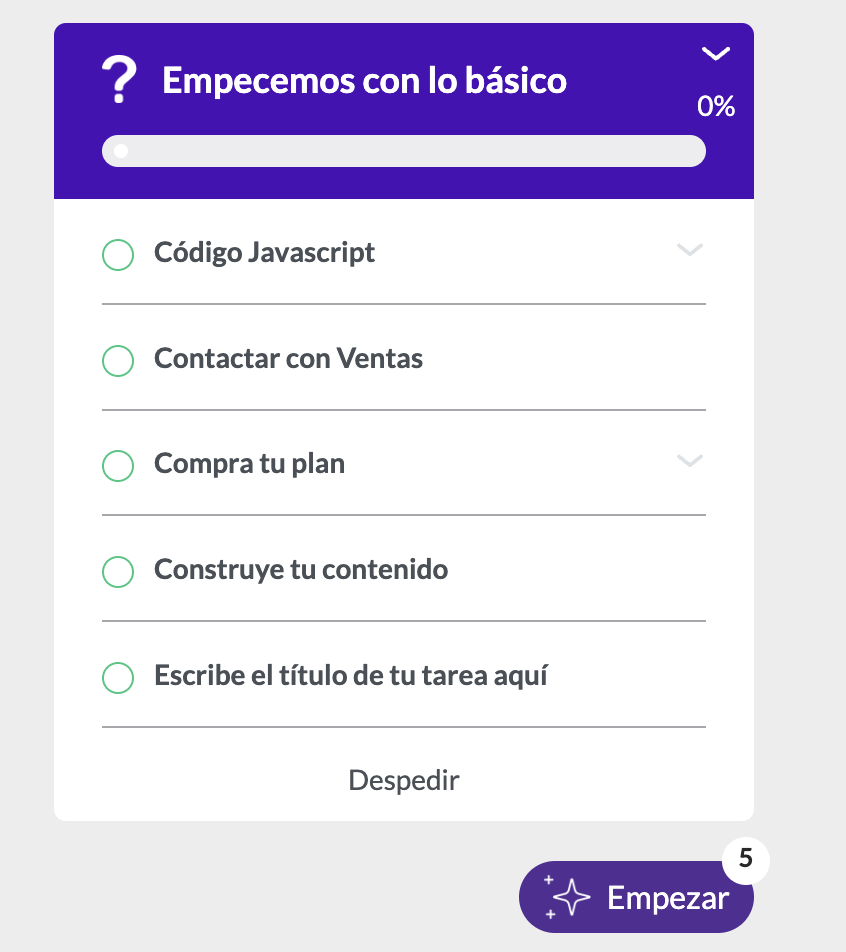
Add Local
When clicking Add Locale, the button will directly take you to Settings > Localization, where you can enable Localization for your content and see the Locale Codes that have been passed to you.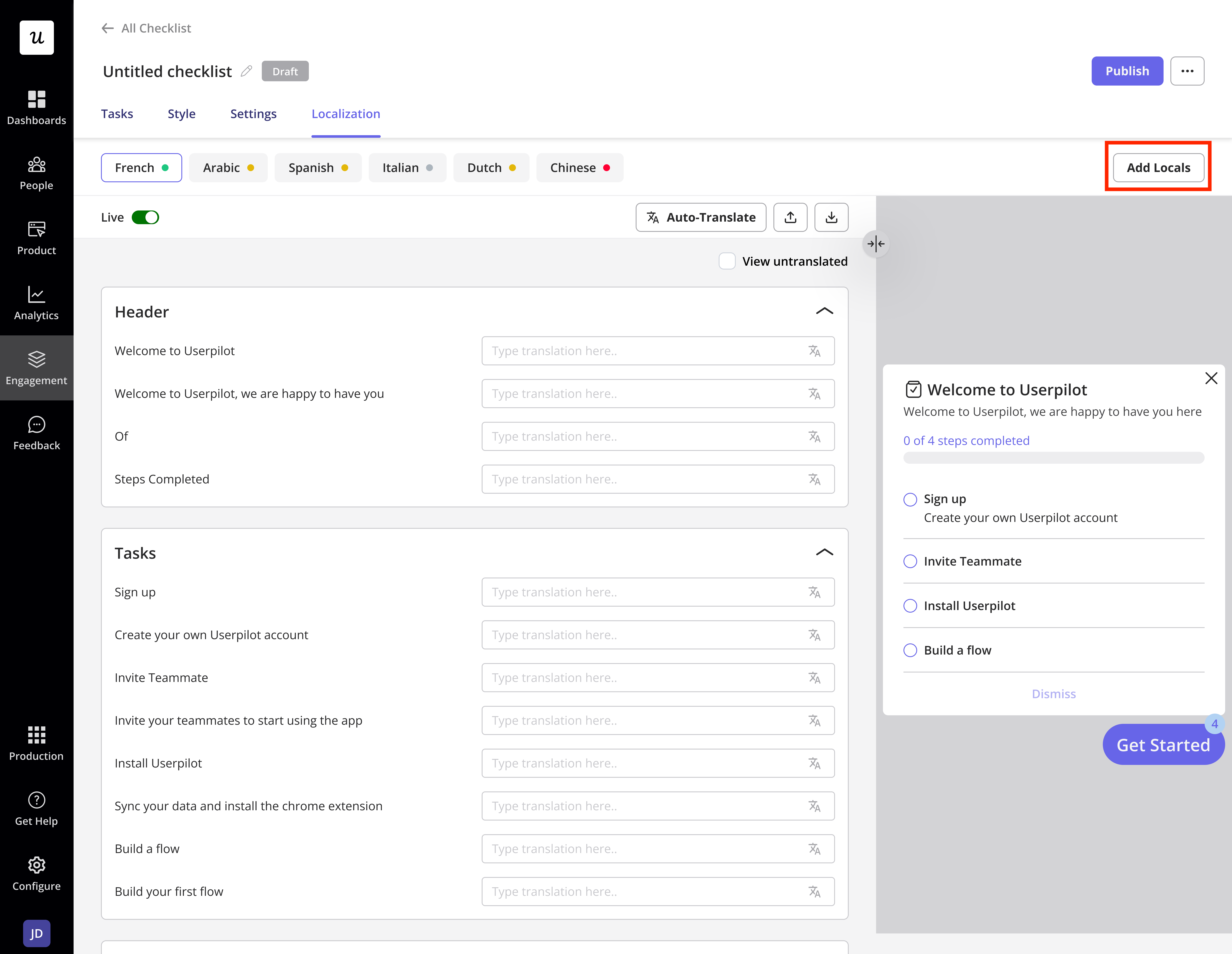
Note: If the Checklist is unpublished, you will see a “Publish” button. In case the Checklist is published, you will see a “Publish Updates” button.